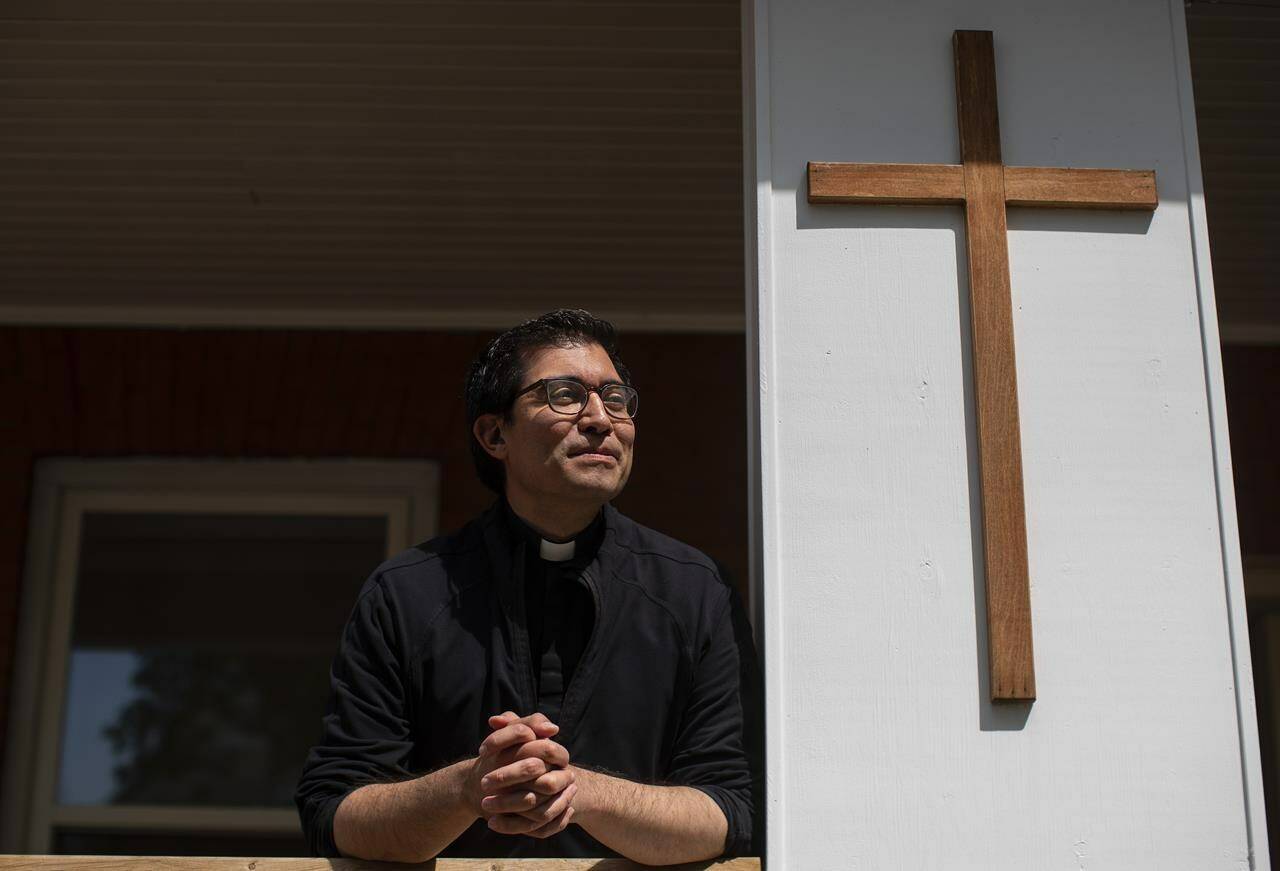When Vatican officials were looking for someone in Canada to act as a liaison for program planning during the Pope’s visit later this month, they had specific criteria.
Ideally, the person would have Indigenous heritage, have a connection to the residential school system and speak Italian.
This left them with one name: Cristino Bouvette.
The 36-year-old Roman Catholic priest from Calgary is Italian through his mother and Cree and Métis through his father. His kokum, or grandmother, was a residential school survivor.
“I have both of those worlds that have come together,” Bouvette said in an interview while in Edmonton.
“This new role is something that I think is uniquely suited to me. If in God’s providence he’s set things up for me to be part of it that way, I’m honoured to do so.”
Bouvette has been named the national liturgical director for the first visit to Canada by Pope Francis. The theme of the trip is “Walking Together” and, from July 24 to 29, the Pope is scheduled to meet with Indigenous groups and residential school survivors at stops in and around Edmonton, Quebec City and Iqaluit.
The position requires Bouvette to work with local organizers and the Vatican’s liturgy office to help ensure any ceremonies that take place during the visit reflect the land they reside on and the Catholic Church.
Bouvette was approached earlier this year when conversations first started about Pope Francis visiting Canada.
“I immediately knew I did not want to do it,” he recalled. “It’s very overwhelming. I was sure it was going to be really complicated. I was just afraid of doing something wrong or getting it wrong.”
Being an Indigenous priest comes with a level of pressure, he said. It’s a role he happily accepts but one that fills him with fear when he thinks about fostering healing and reconciliation between his own people and the church that inflicted pain on them.
An estimated 150,000 Indigenous children were forced to attend residential schools over a century, and the Roman Catholic Church ran about 60 per cent of the schools.
“When I get the sense that a lot of people are counting on me to say or do just the right thing at just the right time — that is the heavier burden.”
Thoughts of his kokum came to mind, he said.
When Amelia Mae Bouvette was seven, she was forced to leave her family on the Saddle Lake Cree Nation in east-central Alberta to attend the Edmonton Residential School, which was operated by the United Church.
Despite this, she maintained a deep connection to her Christian faith. She grew up a member of the United Church and family members were ordained ministers.
Decades later, when it came time for Cristino Bouvette to tell his grandmother he had decided to become a priest, she told him she’d met good nuns and priests in her life and hoped he would be one of them.
She died in 2019, one month short of her 100th birthday.
When Bouvette thinks about what his kokum would say about his role with the Pope’s Canadian visit, it’s not words that come to mind.
“I can see the look on her face and feel her hand in my hand,” he said. “She would be a refuge for me to know that no matter what happened and no matter what I did or how I did it, she would be supporting me. So that brings a lot of comfort.”
The Pope is expected to expand on an apology for the church’s role in residential schools, which he gave to Indigenous delegates earlier this year at the Vatican.
The past few months have been a whirlwind of meetings, said Bouvette.
He has been in touch with Indigenous representatives from each area the pontiff is set to visit to hear what they hope to see from the program. Officials from the Vatican have also walked through the planned sites.
“It’s just surreal to be able to be, in Italian, explaining to some monsignors what the smudge is or why praying in the four directions has significance,” he said. “All of these things are blending into one.”
Details around what the ceremonies will look like are under wraps, but Bouvette said it has been important to develop a program Pope Francis can meaningfully take part in while honouring Indigenous traditions and customs.
“I hope that the people who are looking for something from this get what they need and that, if there are people who didn’t think they needed this or actively do not what it, that at the very least it doesn’t cause them any disturbance or any harm.”
– Brittany Hobson, The Canadian Press

